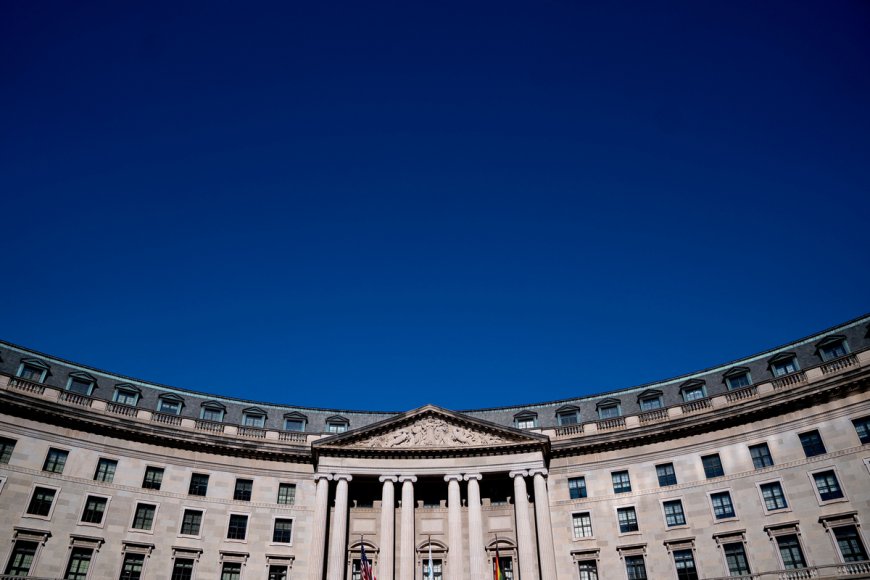Biden budget re-ups Clean Air Act, civil rights goals
Biden budget re-ups Clean Air Act, civil rights goals E&E News by POLITICO

The Biden Administration’s Push for Funding Increase for Air Quality Regulators

The Biden administration is doubling down on its push for a huge boost in funding next year for the state, local, and tribal air quality regulators who handle most permitting and enforcement work, an effort that faced pushback this month on Capitol Hill.
Increased Funding for Air Pollution Monitoring Network
The White House also wants to pump more money into an aging air pollution monitoring network and — despite a recent court setback — still plans to target Clean Air Act permitting decisions found to be discriminatory, according to the EPA budget request released Monday.
Funding Allocation for State, Local, and Tribal Air Agencies
State and local air agencies would get $400.2 million in fiscal 2025, up almost 70 percent from this year’s total of about $236 million. Spending on tribal air quality management grants would jump more than 40 percent from $16.3 million to $23.1 million under the proposal.
Importance of Programs for Environmental Laws and Underserved Communities
These programs are critical “to support implementation of environmental laws across the country and assure tangible progress for historically overburdened and underserved Communities,” EPA said in a more detailed explanation of the request also posted online Monday. Overall spending, the agency added, “has been largely flat since 2018, while the need and expectations from EPA partners has only increased.”
SDGs, Targets, and Indicators
1. Which SDGs are addressed or connected to the issues highlighted in the article?
- SDG 3: Good Health and Well-being
- SDG 11: Sustainable Cities and Communities
- SDG 13: Climate Action
- SDG 16: Peace, Justice, and Strong Institutions
The article discusses the Biden administration’s push for increased funding for state, local, and tribal air quality regulators. This is directly related to SDG 3, which aims to ensure healthy lives and promote well-being for all at all ages. It is also connected to SDG 11, which focuses on making cities and human settlements inclusive, safe, resilient, and sustainable. Additionally, the article mentions the targeting of discriminatory Clean Air Act permitting decisions, which aligns with SDG 16’s goal of promoting peaceful and inclusive societies for sustainable development. Finally, the emphasis on air pollution monitoring and climate action relates to SDG 13’s objective of taking urgent action to combat climate change and its impacts.
2. What specific targets under those SDGs can be identified based on the article’s content?
- Target 3.9: By 2030, substantially reduce the number of deaths and illnesses from hazardous chemicals and air, water, and soil pollution and contamination.
- Target 11.6: By 2030, reduce the adverse per capita environmental impact of cities, including by paying special attention to air quality and municipal and other waste management.
- Target 13.2: Integrate climate change measures into national policies, strategies, and planning.
- Target 16.6: Develop effective, accountable, and transparent institutions at all levels.
Based on the article’s content, the targets mentioned above can be identified. The increased funding for air quality regulators and the focus on addressing discriminatory Clean Air Act permitting decisions contribute to Target 3.9 of reducing deaths and illnesses from air pollution. The investment in an aging air pollution monitoring network aligns with Target 11.6 of improving air quality in cities. The emphasis on climate action and the integration of climate change measures into policies and planning relate to Target 13.2. Lastly, the article’s mention of the need for effective institutions supports Target 16.6.
3. Are there any indicators mentioned or implied in the article that can be used to measure progress towards the identified targets?
Yes, there are indicators mentioned in the article that can be used to measure progress towards the identified targets. However, the article does not provide specific quantitative indicators. To measure progress towards Target 3.9, indicators such as the number of deaths and illnesses related to air pollution can be used. For Target 11.6, indicators could include air quality index measurements and waste management statistics. Indicators for Target 13.2 could involve tracking the integration of climate change measures in national policies and planning documents. Lastly, progress towards Target 16.6 can be measured through indicators related to the effectiveness, accountability, and transparency of institutions involved in air quality regulation and enforcement.
4. Table: SDGs, Targets, and Indicators
| SDGs | Targets | Indicators |
|---|---|---|
| SDG 3: Good Health and Well-being | Target 3.9: By 2030, substantially reduce the number of deaths and illnesses from hazardous chemicals and air, water, and soil pollution and contamination. | Number of deaths and illnesses related to air pollution |
| SDG 11: Sustainable Cities and Communities | Target 11.6: By 2030, reduce the adverse per capita environmental impact of cities, including by paying special attention to air quality and municipal and other waste management. | Air quality index measurements, waste management statistics |
| SDG 13: Climate Action | Target 13.2: Integrate climate change measures into national policies, strategies, and planning. | Integration of climate change measures in national policies and planning documents |
| SDG 16: Peace, Justice, and Strong Institutions | Target 16.6: Develop effective, accountable, and transparent institutions at all levels. | Effectiveness, accountability, and transparency of institutions involved in air quality regulation and enforcement |
Behold! This splendid article springs forth from the wellspring of knowledge, shaped by a wondrous proprietary AI technology that delved into a vast ocean of data, illuminating the path towards the Sustainable Development Goals. Remember that all rights are reserved by SDG Investors LLC, empowering us to champion progress together.
Source: eenews.net

Join us, as fellow seekers of change, on a transformative journey at https://sdgtalks.ai/welcome, where you can become a member and actively contribute to shaping a brighter future.







